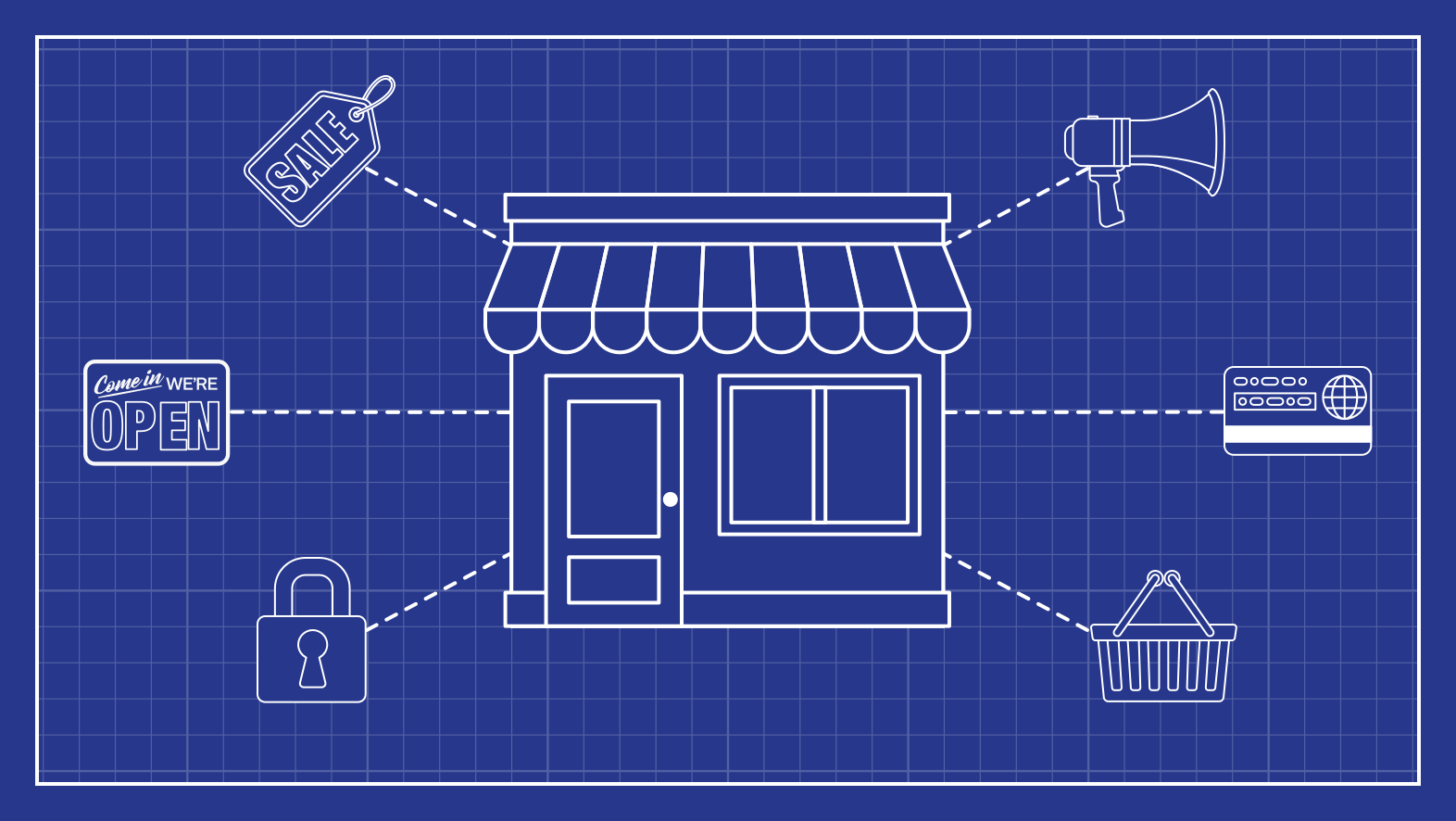
Now that you understand some of the key concepts of SEO, it’s time to start optimizing. In this chapter, you’ll learn some of the technical aspects of SEO, what to do with them, and what we do for you automatically to make sure you start on the right foot.
Site Architecture
Site architecture is the usability and crawlability of your site. It's an essential aspect of SEO and especially important for an ecommerce site.
Search engines want to populate the best results for their users. If their user can get to the thing they want (e.g. a product or blog post) in just a few clicks after clicking on your search result, the more likely your result will rise in rank. Having a site that is easy to navigate will also help search engines crawl (index) your site better.
Search engine bots crawl a website's link structure, both internally and externally, to understand what a site is about. Think of your link structure (sitemap) as a tree with your homepage as the trunk. From the homepage, your most important pages branch out, which then branch out further into your store.
The sitemap can be submitted to search engines, providing them with all the page URLs of your store, which can speed up the process of crawling your site. It will also help keep pages from ending up lost in the clutter as you add more and more content to your store.
It sounds like a lot of work, but the good news is that BigCommerce already does most of the work for you right out of the box.
Your pages are built using proper HTML elements and hierarchy so that they're well organized and easy for search engines to crawl. Our themes are designed to ensure that important information isn't buried inside of unsearchable elements. We've also built microdata, or “rich snippets,” into your product pages to enhance your search result listings with information like ratings, pricing, brand and stock levels which can increase both click-through and conversion rates. Our Cornerstone theme has built-in HTML canonical tags help search engines index the correct URL and prevent duplicate content errors.
If you'd like to customize your design, avoid making changes that could hide relevant content from search engines or make navigation cumbersome. We recommend working with an experienced designer if you plan on making significant changes.
URL Structure and Settings
BigCommerce auto-populates SEO-friendly URLs for every page of your store, but you can control how they are formatted from within your URL Structure settings. If you're unsure about whether or not to customize them, we recommend leaving them set to SEO Optimized (Short).
We ensure that every unique page has only one URL, so you don't get punished for duplicate content. If you rename a product, the auto-populated URL will adjust to reflect the name change, and the old URL will be redirected to the new URL. This prevents shoppers and search engines from encountering a 404 error (broken link).
Automatic redirects and rewrites help search engines understand when you've made changes or moved pages on your site. You can also manually set 301 redirects, which is helpful if you've moved from another platform or remove content and need to redirect the old pages.
If you are moving from another platform, our catalog transfer apps can help you migrate your catalog data from a variety of platforms. We also have a range of services that can help you through everything from building a functioning store to optimizing for higher conversions.
Sitewide Encryption
Back in 2014, Google announced that HTTPS would be a factor in search ranking algorithms. With the release of Chrome 68, Google made a push to label any site not using HTTPS as "not secure." HTTPS alone may be a lightweight ranking factor, but the label of "not secure" can negatively impact your stores' user experience. BigCommerce offers a free SSL certificate for stores on any plan, allowing you to enable sitewide HTTPS. A free SSL and a boost in rank — what's not to like?
Mobile Experience

Now more than ever, your website needs to be mobile optimized. Google announced that they started moving to a "mobile first" index, so it's important to be ready for it sooner rather than later. All of our Stencil themes are responsive and optimized for fast loading times on mobile devices from the start, so there is no need to maintain a separate mobile version.
Site Speed

Search engines aim to give users the best search experience possible, so it's a given that site speed is a factor in ranking. There are many other benefits to making your site faster such as higher conversions, better user experience, and lower abandoned carts.
Our Guide to Site Speed can show you how to test your page load speed, make sense of the test scores, and the different methods for improving it on your BigCommerce store.
Although there are many things you can do to increase your site speed, our unique content delivery network is always working in the background to make sure your site loads quickly for both shoppers and search engines. We also provide Responsive Images via the srcset attribute to all stores using a Stencil theme based on Cornerstone 4.0 or newer. This will automatically optimize your images for the best viewing experience — no matter the device.
By now you should have a good grasp of the SEO functionality we provide automatically, but you will still need to do a bit of work to ensure your store performs well in search results. Creating an SEO strategy begins with keyword and market research. They go hand in hand when building an ecommerce SEO campaign. In the following chapter, we'll explain what keywords are, and how market research can help you in developing a keyword strategy.


